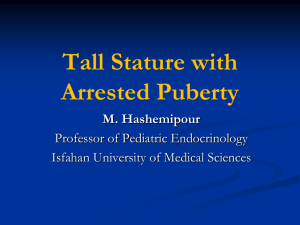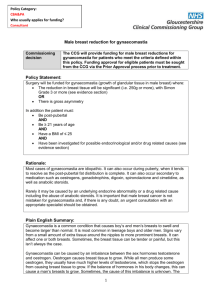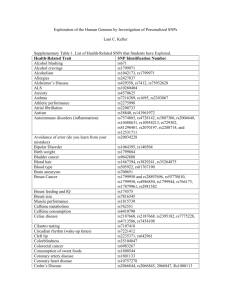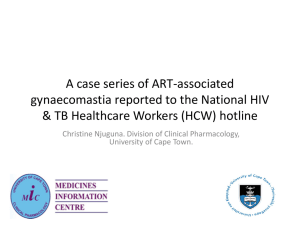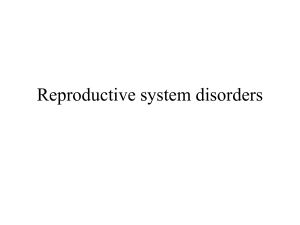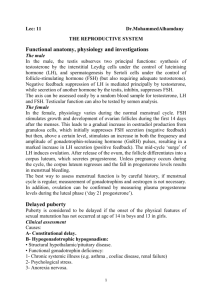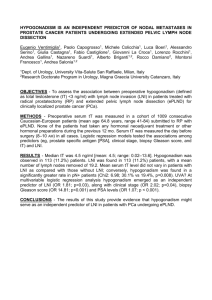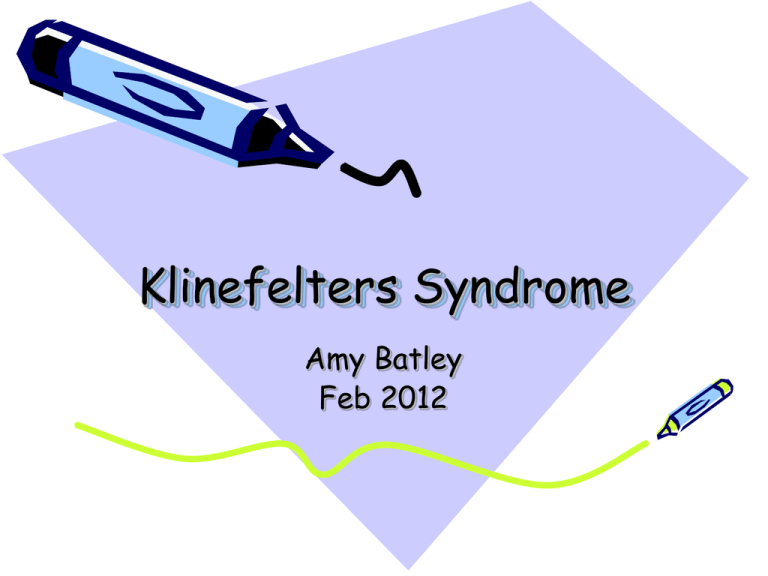
Klinefelters Syndrome
Amy Batley
Feb 2012
Dr Harry Klinefelter Jnr
• 1942
• Massachusetts
• Described men
–
–
–
–
–
TALL
HYPOGONADISM
NO SPERM
SPARSE HAIR
GYNAECOMASTIA
Epidemiology
• Most common sex chromosome
disorder
• Approx 1.7/1000 male births
• All ethnicity
Genetics
• Normally 46 XY (Man)
• In Klinefelters mainly an xtra X
(47XXY)
• But variations occur
• 48 XXYY, mosaic- 47XXY/46XY
Presentation
Delayed speech
Learning difficulties
(varying)
Gynaecomastia
Rapid growth
mid childhood
PRESENTATION
Failure of sexual
maturation
Truncal obesity
Hypogonadism
Subfertility /
impotence
Features
Features
features
•
•
•
•
•
•
Loss of libido,
Reduced power and muscle strength
Tiredness
Osteoporosis
Depression
At risk heart disease
Investigations
• Serum testosterone is low /low
normal
• Fsh and lh are raised
• Chromosomal analysis to confirm
Associations
hypothyroid
Lung diseas
Breast
cancer x50
Speech dely
Insulin
resistance
Germ cell tumours
PSYCH
Management
• Endocrine/genetics/psychologist/
Speech therapist
• Testosterone replacement (just prior
to puberty)
• Breast education
• Fertility treatment ICSI AID
• Plastic - gynaecomastia
Prognosis
• Lifespan is normal
Kallmann syndrome
• Kallmann Syndrome: A rare inherited
condition
• hypogonadism, eunuchoidism
• impaired or absent sense of smell.
• failure of a part of the hypothalamus
which results in hormonal imbalance.
Marfans
• connective tissue disorder
• tall stature, elongated extremities,
subluxation of the lens,
• dilatation of the ascending aorta
• "pigeon breast."
• autosomal dominant
Hypopituitary
•
•
•
•
•
reduced pituitary hormone levels.
growth hormones
prolactin
TSH
ADH
Questions

